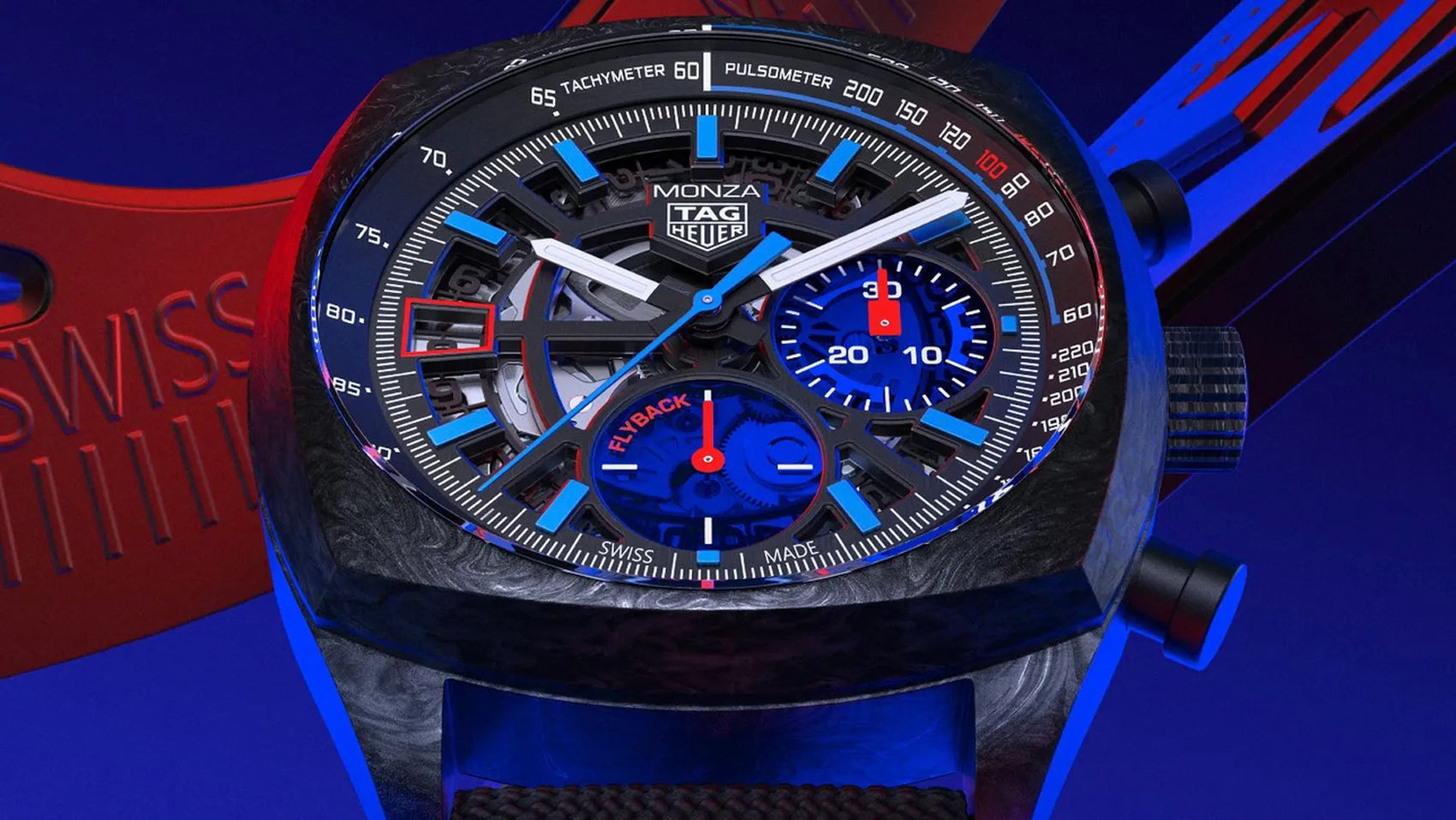The Flyback Function - Precision and Innovation in Timekeeping
Flyback watches, such as those used by pilots, make timekeeping much easier. A single push of a button resets the watch to zero and starts a new measurement process. Below we explain in detail how the chronographs with the convenient stop function work, take a look at the history of their development and see what distinguishes them from split-second chronographs.
The most important things in brief
-
Flyback function: The flyback function allows instant stopping, resetting and restarting of the time measurement with a single pusher and is therefore clearly one of the complications with enormous practical use.
-
Rattrapante (split hand): The split-seconds or rattrapante chronograph (from the French "rattraper" for "to catch up") allows the measurement of intermediate times using an additional hand. In the triple split version, which originally came from A. Lange & Söhne, such a chronograph measures intermediate times over up to 12 hours.
-
Applications: Due to its simple handling and the resulting precision, the watch with flyback function has proven to be particularly useful in aviation, sports and scientific measurements.
What is a flyback chronograph?
With a conventional chronograph, the current measurement process is simply stopped by pressing the button. To set the hand back to zero and start a new measurement, the button must be pressed two more times. Flyback chronographs, whose mechanism is also known as "retour en vol", make handling much easier by using two buttons. The first button stops the hand, while the second button triggers the zero setting. The special feature: if you press the second button during a current measurement process, the measurement stops and you can see the hand fly smoothly back to zero across the dial. As soon as the button is released, a new time measurement process begins without any detours.
Technical details and functionality
The most important component for the wearer of wristwatches with flyback complications is the pusher, which, when pressed once, stops the current stopwatch, sets the second hand to zero and starts the new counting process. This superficially simple principle has long since proven itself, particularly in areas where precision and quick handling are important, such as cycling or aviation.
But a look beneath the surface shows that flyback chronographs are by no means "simple" complications. The function is made possible by a complex mechanism that disengages the chronograph for the brief moment of zeroing so that the hammers required for this are not damaged. The disengagement, which in conventional chronographs is carried out permanently using a pusher or until the next button is pressed, is reduced to the one moment in which it is essential in flyback watches.
The development of the flyback function
Originally developed for aviation in the 1930s, the Flyback Chronograph goes back to the brand Longines In 1936, the company patented its own flyback caliber L13ZN, thereby making watch history. After extensive military use, in which the Breguet Type XX was one of the most successful models, watches with a flyback hand gradually disappeared from the scene. It was not until 1996 that major watch companies once again ventured into producing modern interpretations of the well-known flyback watches, with the Blancpain reference 2185 F, among others, making a strong impression.
To this day, watches with a flyback mechanism can be described as an exception, as they are still few and far between on the market. Nevertheless, watch lovers who are specifically looking for a model with a flying second hand have a small but fine selection to choose from, including great flyback chronographs such as the Big Bang Unico by Hublot or the reference 5905 from Patek Philippe , belong.
Care and Maintenance of Flyback Chronographs
Every complex mechanical movement should be serviced regularly to ensure a long service life. This also applies to models with return en vol. Every few years, the watch should be taken to a specialist who can repair minor faults and damage before they lead to expensive consequential damage.
Comparison: Flyback Chronograph vs. Rattrapante
Flyback, rattrapante, split-seconds - these are all terms that are often mentioned in connection with chronographs and are often confused. Time to clarify: Flyback chronograph and rattrapante are two different chronograph mechanisms that must be distinguished from one another. The terms rattrapante and split-seconds mechanism, on the other hand, mean one and the same thing.
When a chronograph is called a rattrapante, it means that it has two second hands that can be stopped independently of each other. The second hand - the split hand - is synchronized with the "normal" second hand, which drags it along, so to speak. A chronograph with a rattrapante is primarily intended for stopping intermediate times and is therefore ideal for use in races. For example, it can be used to measure the time that passes between the first athlete arriving at the finish line and the second participant crossing the finish line precisely and easily. By pressing a button, the second hand moves up to the first and aligns itself with it again, so that a new process can be started immediately.
The company A. Lange & Söhne took the performance of the rattrapante function to the extreme in an innovative way in 2018. In order to enable the stopping of intermediate times of more than 60 seconds, the brand introduced the double split-seconds chronograph, which is equipped with two minute hands, in 2004. Recently, A. Lange & Söhne amazed the watch world with the Triple Split, a rattrapante watch with two second, two minute and two hour hands. With this masterpiece of watchmaking, measurements over up to 12 hours are possible.
Famous Flyback Chronographs
Finally, we would like to briefly introduce some of the most famous and popular flyback chronographs. First of all, there is the Hublot Big Bang Unico Chronograph, which we have already mentioned. The watch, which is powered by the innovative HUB1280 UNICO caliber with an "open heart" and column wheel on the dial side, has a 72-hour power reserve and is available in many different variations - for example in satin-finished titanium or with diamonds. These models are also noteworthy:
-
Patek Philipp 5935A: Mechanical world time watch with day/night display and flyback function
-
Tag Heuer Monza Chronometer: Flyback Chronometer in carbon case with skeletonized dial and subdials made of sapphire crystal
-
Breguet Type 20 Chronographe 2057: Elegant wristwatch with small second, date display, rotating bezel and luminous indices
-
Panerai Luminor 1950: Flyback chronograph with rounded case corners, automatic movement and small second
-
Longines Spirit : Sporty double chronograph with flyback function and elegant gold-plated hands
Conclusion
The flyback function is undoubtedly one of the most impressive complications that the watch world has to offer. The complex technology that makes these special chronographs so easy to use is a testament to the great achievements of haute horlogerie and quite rightly holds a tremendous fascination for every watch lover.











